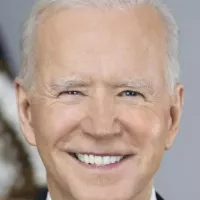USA Today is an American daily newspaper and news broadcasting company founded by Al Neuharth in 1980, launching in 1982. Operating from Gannett's headquarters in New York City, the newspaper is printed across numerous sites in the US and internationally. It is known for its impactful design, influencing newspapers globally through concise reporting, colorized images, informational graphics, and integration of popular culture stories.
1953: Launch of Family Weekly
In 1953, Family Weekly, which would become USA Weekend, launched as a national Sunday magazine supplement.
February 29, 1980: USA Today First Conceived
On February 29, 1980, the concept for USA Today was first conceived when a company task force known as "Project NN" met with Gannett's chairman, Al Neuharth, in Cocoa Beach, Florida.
1980: USA Today Founded
In 1980, USA Today was founded by Al Neuharth, marking the beginning of the American daily middle-market newspaper and news broadcasting company.
June 11, 1981: Gannett Printed First Prototypes
On June 11, 1981, Gannett printed the first prototypes of the proposed USA Today publication. The two proposed design layouts were mailed to newsmakers and prominent leaders in journalism for review and feedback.
December 5, 1981: Gannett Approved Launch of USA Today
On December 5, 1981, Gannett's board of directors approved the launch of the national newspaper titled USA Today, and Al Neuharth was appointed president and publisher.
April 20, 1982: Gannett announced launch of USA Today
On April 20, 1982, Gannett announced the launch of USA Today. USA Today began publishing on September 14, 1982, initially in the Baltimore and Washington, D.C. metropolitan areas, for a newsstand price of 25¢.
September 14, 1982: USA Today Launched
On September 14, 1982, USA Today was launched by Al Neuharth. The newspaper operates from Gannett's corporate headquarters in New York City. Its newspaper is printed at 37 sites across the United States and at five additional sites internationally.
July 2, 1984: USA Today switches to full-color
On July 2, 1984, USA Today switched from predominantly black-and-white to full-color photography and graphics in all four sections.
1984: USA Today did not endorse candidates
Beginning with the 1984 United States presidential election, USA Today adopted a policy of not endorsing candidates for president or any other political office, which was re-evaluated every four years.
April 8, 1985: First Bonus Section Published
On April 8, 1985, USA Today published its first special bonus section, a 12-page section called "Baseball '85", which previewed the 1985 Major League Baseball season.
1985: USA Today becomes second-largest newspaper
By the fourth quarter of 1985, USA Today had become the second-largest newspaper in the United States, reaching a daily circulation of 1.4 million copies.
1985: Gannett's purchase of Family Weekly and rename to USA Weekend
In 1985, Gannett purchased Family Weekly and renamed it USA Weekend.
May 6, 1986: International Edition Production Begins in Switzerland
On May 6, 1986, USA Today began production of its international edition in Switzerland, expanding its global reach.
May 1987: USA Today Turns First Profit
In May 1987, USA Today began turning its first profit, six months ahead of Gannett's corporate revenue projections.
July 1987: Gannett released that USA Today first turned profit
According to figures released by Gannett in July 1987, USA Today began turning its first profit in May 1987, six months ahead of Gannett's corporate revenue projections.
1987: Development of USA Today: The Television Show began
In 1987, Gannett and Grant Tinker began developing USA Today: The Television Show.
January 29, 1988: Largest Edition Published
On January 29, 1988, USA Today published the largest edition in its history, a 78-page weekend edition featuring a section previewing Super Bowl XXII.
August 1988: International Edition Sets Records During Olympics
During August 1988, the international edition of USA Today set circulation and advertising records with coverage of the 1988 Summer Olympics, selling more than 60,000 copies and 100 pages of advertising.
September 12, 1988: Premiere of USA Today: The Television Show
On September 12, 1988, USA Today: The Television Show premiered in broadcast syndication, attempting to bring the style of USA Today to television.
February 1989: WCBS-TV canceled USA Today: The Television Show
In February 1989, WCBS-TV in New York City canceled USA Today: The Television Show.
November 1989: Cancellation of USA Today: The Television Show
In November 1989, the TV version of USA Today was canceled mid-season after one-and-a-half seasons.
January 7, 1990: Final edition of USA Today: The Television Show aired
On January 7, 1990, the final edition of USA Today: The Television Show aired after its mid-season cancellation in November 1989.
January 19, 1991: USA Today published a Saturday "Extra" edition
On January 19, 1991, USA Today released a special Saturday "Extra" edition to provide updated coverage of the Gulf War, marking a departure from its usual weekend publishing schedule.
April 5, 1991: Debut of USA Today Baseball Weekly
On April 5, 1991, USA Today Baseball Weekly, a tabloid-sized publication, debuted.
July 1991: Highest Daily Readership
By July 1991, USA Today had a total daily readership of nearly 6.6 million, an all-time high and the largest readership of any daily newspaper in the United States.
September 1, 1991: Fourth Print Site Launched in London
On September 1, 1991, USA Today launched a fourth print site for its international edition in London for the United Kingdom and the British Isles.
October 28, 1994: National sales chart debuted
On October 28, 1994, USA Today introduced a national sales chart for books, which was featured on Thursdays in the Life section.
February 1, 1995: First Editorial Bureau Opened Outside the U.S.
On February 1, 1995, USA Today opened its first editorial bureau outside the United States at its Hong Kong publishing facility.
April 17, 1995: USA Today Launched Website
On April 17, 1995, USA Today launched its website to provide real-time news coverage, marking its entry into the digital age.
July 19, 1996: USA Today published special editions for the 1996 Summer Olympics
On July 19, 1996, USA Today began publishing special seven-day-a-week editions for the two-week duration of the 1996 Summer Olympics, exclusively distributed in Atlanta and its surrounding areas.
1997: USA Today Profitable for 10 Years
By 1997, USA Today had been profitable for ten years, marking a significant change in the appearance and feel of newspapers worldwide.
March 1998: Life section split into two on Fridays
Since March 1998, the Friday edition of USA Today's Life section has been divided into two parts: the regular Life section (Weekend) focusing on entertainment, and a travel supplement called Destinations & Diversions.
October 4, 1999: Advertisements on Front Page
On October 4, 1999, USA Today began running advertisements on its front page for the first time, a significant shift in its advertising strategy.
1999: Brian Gallagher became editorial page editor
In 1999, Brian Gallagher became the editorial page editor for USA Today, a position he held until 2002 and again from 2004 to 2015. Gallagher had been with the newspaper since its founding.
1999: Kramer hired Callaway as lead editor of MarketWatch
In 1999, Kramer hired David Callaway as lead editor of MarketWatch.
1999: Air quality indexes expanded
In 1999, USA Today expanded the four-day forecasts and air quality indexes to include 36 major U.S. cities, up from the previous 16.
February 8, 2000: USA Today Live Launched
On February 8, 2000, Gannett launched USA Today Live, a broadcast and Internet initiative designed to provide coverage from the newspaper to broadcast television stations nationwide and integrate with the USA Today website.
April 2000: Gulliver Typeface Implemented
In April 2000, the Gulliver typeface was implemented for story headers in USA Today, prior to being replaced by the Prelo font in 2011.
2001: USA Today Careers Network and News Center Launched
In 2001, USA Today launched two interactive units: the USA Today Careers Network on June 19 and the USA Today News Center on July 18.
January 2002: The Weather Channel became forecast provider for USA Today
In January 2002, The Weather Channel became the forecast data provider for USA Today through a long-term multimedia content agreement with Gannett.
June 2002: Website Expanded to Include Travel Information
In June 2002, the USA Today website expanded to include a section providing travel information and booking tools, enhancing its online offerings.
September 4, 2002: Expansion of sports coverage and adoption of general title
On September 4, 2002, USA Today Baseball Weekly expanded its sports coverage, adopting the general title Sports Weekly after adding stories about the NFL.
2002: Brian Gallagher's term as editorial page editor ended
In 2002, Brian Gallagher's first term as the editorial page editor for USA Today ended. He later resumed the role from 2004 to 2015.
2004: Brian Gallagher became editorial page editor again
In 2004, Brian Gallagher once again became the editorial page editor for USA Today, resuming the role he had previously held from 1999 to 2002.
2004: Plans to develop Sports Page program
In 2004, Gannett announced plans to develop a USA Today-branded weekly half-hour television program titled Sports Page, but it never launched.
2004: Jack Kelley Resigned
In 2004, Jack Kelley, a senior foreign correspondent for USA Today, was found to have fabricated foreign news reports over the past decade and he resigned.
December 12, 2005: Gannett Combines Newsroom Operations
On December 12, 2005, Gannett announced that it would combine the separate newsroom operations of the online and print entities of USA Today, with Kinsey Wilson promoted to co-executive editor.
2005: Integration of Sports Weekly into USA Today's sports department
In late 2005, the editorial operations of Sports Weekly were integrated into USA Today's sports department.
February 15, 2006: Sports Weekly added NASCAR coverage
On February 15, 2006, Sports Weekly added coverage of NASCAR, which lasted only through that year's race season.
February 2006: Launch of The Big Lead
In February 2006, The Big Lead, a sports blog, was launched by Fantasy Sports Ventures.
August 8, 2007: Sports Weekly added coverage of NCAA college football
On August 8, 2007, Sports Weekly added coverage of NCAA college football.
March 7, 2008: Open Air magazine supplement launched
On March 7, 2008, USA Today launched Open Air, an occasional magazine supplement that appears several times a year.
April 2008: Strategic content and marketing partnership with Gannett
In April 2008, The Big Lead established a strategic content and marketing partnership with Gannett.
2009: David Hunke was publisher
Since 2009, David Hunke was publisher of USA Today.
August 27, 2010: Newsroom Reorganization and Layoffs
On August 27, 2010, USA Today announced a reorganization of its newsroom, resulting in layoffs of 130 staffers. The paper shifted its focus away from print to emphasize digital platforms and launched USA Today Sports.
December 2010: USA Today API Launched
In December 2010, USA Today launched the USA Today API for sharing data with partners of all types, enhancing its data accessibility.
January 24, 2011: Tweaked Format Introduced
On January 24, 2011, USA Today introduced a tweaked format to reverse a revenue slide, modifying the appearance of its front section pages, including a larger logo, coloring tweaks, and a new sans-serif font called Prelo for certain headlines.
January 2012: Gannett purchased The Big Lead
In January 2012, Gannett purchased The Big Lead.
May 2012: Larry Kramer appointed president and publisher of USA Today
In May 2012, Larry Kramer was appointed president and publisher of USA Today, replacing David Hunke.
July 2012: David Callaway hired as editor-in-chief
In July 2012, David Callaway was hired as editor-in-chief of USA Today.
September 14, 2012: Major Redesign for 30th Anniversary
On September 14, 2012, USA Today underwent the first major redesign in its history, commemorating the 30th anniversary of the paper's first edition, adding a technology section, expanding travel coverage, and increasing the number of color pages.
September 2012: AccuWeather became forecast provider for USA Today
In September 2012, AccuWeather resumed its role as the forecast provider for USA Today, replacing The Weather Channel.
2012: USA Today Started Longread Article Plans
Following the relaunch, in 2012, the editorial team behind USA Today Investigations ramped up its "longread" article plans, following the success of the series Ghost Factories.
2012: Gannett Digital Won Multiple Awards
In 2012, Gannett Digital's focus on its mobile content experience paid off with multiple awards; including the Eppy for Best Mobile Application, the Mobile Excellence award for Best User Experience, the MOBI award for Editorial Content, and Mobile Publisher of the Year.
2012: USA Today rated as "moderate"
In 2012, USA Today was the only one of 42 prominent American daily newspapers rated as "moderate" by the Boston University Library.
2012: USA Today calls for stronger gun laws
In 2012, after its 30th anniversary revamp, USA Today took a more active stance on political issues, calling for stronger gun laws after the Sandy Hook Elementary School shooting.
2012: Gannett implemented USA Today color scheme for TV graphics
In late 2012, Gannett began incorporating the USA Today color scheme into a standardized broadcast graphics package across its television stations, using the colors in rundown graphics and story bumpers.
2012: Stock tables discontinued with redesign
With the 2012 redesign, USA Today discontinued stock tables for individual stock exchanges and mutual indexes, aligning with the trend among newspapers due to the rise of electronic stock price tracking.
April 2013: Launch of For the Win
In April 2013, USA Today launched a sports website called For the Win, the first sports property devoted to social news.
October 6, 2013: Gannett test launched condensed USA Today edition
On October 6, 2013, Gannett initiated a test launch of a condensed daily USA Today edition in four newspapers: The Indianapolis Star, the Rochester Democrat & Chronicle, The News-Press in Fort Myers, and The Post-Crescent in Appleton, Wisconsin. This was part of Gannett's "Butterfly" initiative.
October 2013: Brad Heath's Series Won Tom Renner Award
In October 2013, Brad Heath's series Locked Up, launched with Gannet Digital's longread mobile experience, won the Investigative Reporters and Editors Tom Renner Award.
October 2013: USA Today regained position as the highest-circulated weekday newspaper
In October 2013, USA Today regained its position as the highest-circulated weekday newspaper in the United States.
2013: Criticism of the Republican Party and Barack Obama
In 2013, USA Today heavily criticized the Republican Party for the government shutdown. It also called out then-President Barack Obama and other top members of the Democratic Party for what it perceived as "inaction" during 2013–14, particularly over the NSA scandal and the ISIL beheading incidents.
2013: USA Today site design launched
In 2013, USA Today launched its new site design for desktop, mobile, and TV platforms. Despite the redesign, older content remained accessible through search engines, retaining the pre-relaunch design.
January 4, 2014: USA Today acquired Reviewed.com
On January 4, 2014, USA Today acquired Reviewed.com, a consumer product review website, expanding its digital content offerings.
April 2014: Gannett launched condensed USA Today edition in additional newspapers
In April 2014, Gannett formally launched the condensed daily edition of USA Today in 31 additional local newspapers nationwide, expanding from the initial four pilot newspapers. This decision was made after positive feedback from readers and advertisers.
September 3, 2014: USA Today announced layoffs
On September 3, 2014, USA Today announced it would lay off approximately 70 employees as part of a restructuring effort impacting both the newsroom and business operations.
October 2014: USA Today partnered with OpenWager Inc. to release USA Today Bingo Cruise
In October 2014, USA Today partnered with OpenWager Inc. to launch USA Today Bingo Cruise, a Bingo mobile app.
December 5, 2014: End of USA Weekend announced
On December 5, 2014, Gannett announced the end of USA Weekend after the December 26–28, 2014 edition, citing increasing operational costs and reduced advertising revenue.
2014: USA Today site design launched
In 2014, USA Today continued the launch of its new site design for desktop, mobile, and TV platforms, complementing the initial release in 2013. Archive content remained accessible through the older design via search engines.
July 2015: Tegna spun off from Gannett
In July 2015, Tegna was spun off from Gannett as a separate broadcast and digital media company, taking with it the television station group that had previously adopted the USA Today color scheme in its broadcast graphics.
December 3, 2015: Gannett launched the USA Today Network
On December 3, 2015, Gannett officially launched the USA Today Network, a national digital newsgathering service sharing content between USA Today and 92 local newspapers, pooling advertising services on a national and local scale.
2015: Brian Gallagher's term as editorial page editor ended
In 2015, Brian Gallagher's term as the editorial page editor for USA Today ended. He originally took the role in 1999, then again in 2004.
2015: Criticism of the Republican Party
In 2015, USA Today heavily criticized the Republican Party for the revolts in the United States House of Representatives that ended with the resignation of John Boehner as House Speaker.
January 2016: USA Today Network expanded
In early January 2016, Gannett's other local newspaper properties, and those acquired through the merger with Journal Media Group, gradually began identifying themselves as part of the USA Today Network, foregoing the use of the Gannett name outside of ownership references.
September 29, 2016: USA Today condemns Donald Trump's candidacy
On September 29, 2016, the editorial board of USA Today broke from its "non-endorsement" policy for the first time by publishing an op-ed piece condemning the candidacy of Republican nominee Donald Trump, citing concerns about his rhetoric, temperament, business record, and potential risks to national security.
October 20, 2016: Debut of VRtually There
On October 20, 2016, VRtually There, a weekly virtual reality news program produced by the USA Today Network, debuted.
2016: Gravity Ad Won Digiday's Best Publishing Innovation
In 2016, the Gravity ad on USA Today's website won Digiday's Best Publishing Innovation in Advertising, achieving high user engagement rates.
August 1, 2017: Last story uploaded on VRtually There
On August 1, 2017, the last story was uploaded on VRtually There, less than a year after the series was created.
2017: Auto-Play Functionality on Website
In 2017, some pages of USA Today's website featured Auto-Play functionality for video or audio-aided stories, enhancing user engagement.
February 2018: USA Today publishes op-ed by Jerome Corsi
In February 2018, USA Today published an op-ed by Jerome Corsi, the DC bureau chief for the fringe conspiracy website InfoWars, leading to controversy due to Corsi's history of promoting conspiracy theories.
October 2018: Criticism for publishing an editorial by President Trump
In October 2018, USA Today was criticized by NBC News for publishing an editorial by President Trump that was replete with inaccuracies.
2018: Launch of USA Today-branded over-the-top channels
In 2018, Gannett launched USA Today-branded over-the-top channels, USA Today News and USA Today SportsWire (later renamed as USA Today Sports).
2020: USA Today endorses Joe Biden for president
In 2020, USA Today endorsed a presidential candidate for the first time, endorsing Democratic nominee Joe Biden. The newspaper also published an opposing editorial by Vice President Mike Pence.
May 2021: USA Today introduced a paywall
In May 2021, USA Today implemented a paywall for certain online articles, changing its access model for digital content.
2021: Relaunch of USA Today-branded channels as FAST channels
In 2021, USA Today-branded over-the-top channels were relaunched as free ad-supported streaming television (FAST) channels.
June 16, 2022: USA Today removed articles by Gabriela Miranda
On June 16, 2022, USA Today removed 23 articles written by journalist Gabriela Miranda. This action followed an internal investigation that found Miranda had fabricated sources in articles covering the Texas Heartbeat Act, Ukrainian women's issues, and sunscreen. Miranda subsequently resigned.
2023: USA Today Circulation in 2023
As of 2023, USA Today has the fifth largest print circulation in the United States, with 132,640 print subscribers. It has two million digital subscribers, the fourth-largest online circulation of any U.S. newspaper.
September 2024: Caren Bohan as editor-in-chief
As of September 2024, Caren Bohan is the editor-in-chief of USA Today.
2024: Equivalent cost of USA Today first issue
In 1982 the first issue of USA Today cost 25¢ which is equivalent to 81¢ in 2024.
2024: USA Today moved headquarters
In 2024 USA Today moved its headquarters to New York, NY.
2024: Dace Potas publishes opinion after presidential election
In 2024, after the presidential election, opinion fellow for USA Today Dace Potas published: Trump is president again and Democrats can blame Biden's ego.
Mentioned in this timeline

Donald John Trump is an American politician media personality and...

Barack Obama the th U S President - was the...
The United States of America is a federal republic located...

Joe Biden a member of the Democratic Party served as...
NBC News is the news division of NBC operating under...

College football is a popular amateur sport in the United...
Trending

2 months ago LoL Worlds 2025: T1 vs Gen.G Final Forecasted to Break Viewership Records
1 month ago Priah Ferguson discusses girlhood, growth, Stranger Things goodbye, and Erica spinoff possibilities.

25 days ago Immigration Crackdown in New Orleans: Federal Action and Immigrant Concerns Emerge.

2 months ago Sadie Sink avoids Spider-Man spoilers, shows abs. Holland's mistakes provide lessons.

8 months ago Adam Sandler in 'Jay Kelly' with George Clooney; Rival movie releases compared.

26 days ago Hayley Williams Excludes Racist, Sexist, and Transphobic Fans from Her Shows.
Popular

XXXTentacion born Jahseh Dwayne Ricardo Onfroy was a controversial yet...

Stranger Things created by the Duffer Brothers is a popular...
The Kennedy Center Honors are annual awards recognizing individuals and...
Turning Point USA TPUSA is an American nonprofit organization founded...

Candace Owens is an American conservative political commentator and author...

William Franklin Graham III commonly known as Franklin Graham is...